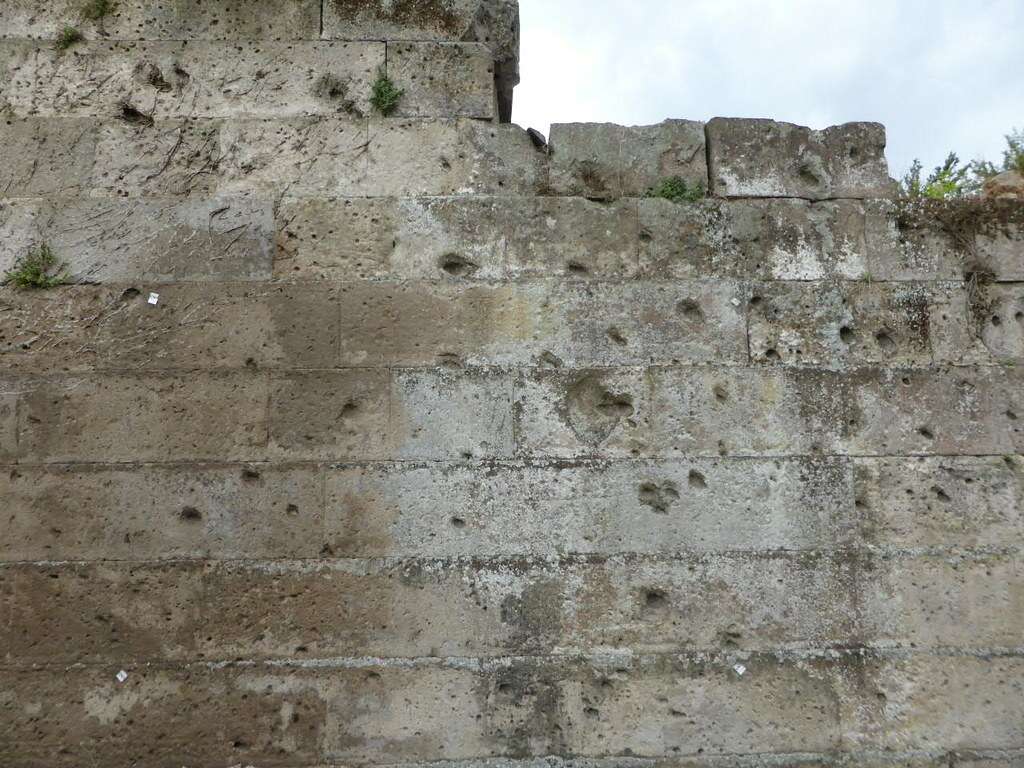

A new study suggests Roman forces may have used a rare ancient Greek repeating ballista—known as the polybolos and sometimes described as a ‘machine gun of antiquity’—during the siege of Pompeii in 89 BCE.
Researchers say markings discovered on the city’s stone walls could be the earliest physical evidence of a repeating arrow-firing device known from ancient texts.
The findings, led by Adriana Rossi of the University of Campania, were published in the Nexus Network Journal and focus on a section of Pompeii’s northern wall, near the gates of Vesuvius and Herculaneum.
The team identified small square and diamond-shaped holes grouped in tight clusters of four or five. These patterns, they argue, are inconsistent with damage caused by traditional catapults or hand-held weapons. Instead, the precise spacing and repeated impact points suggest that the projectiles were fired in rapid bursts.
According to the researchers, this points to the use of a mechanical firing device. The most likely candidate is the polybolos, a repeating weapon described in ancient Greek writings.
The invention of the polybolos is credited to Dionysius of Alexandria, a Greek engineer who worked in Rhodes during the 3rd century BCE.

Rather than operating like a traditional crossbow, the polybolos used a torsion-powered system based on twisted cords to fire multiple arrows in succession. Its design, known only from texts, was detailed by Philo of Byzantium, who wrote between 280 and 220 BCE.
Philo described the weapon’s chain-driven gear system, which automatically loaded and fired arrows one after another. This marks the earliest known description of a mechanically repeating firing mechanism, centuries ahead of its time.
To investigate further, the research team employed 3D scanning and digital reconstruction tools. By modeling the trajectory and force of the impacts, they estimated that the projectiles struck at a speed of about 109 meters per second – surprisingly fast for ancient technology.
They also compared the depth and shape of the holes to preserved Roman arrowheads held in museum collections across Europe. The match in dimensions further supports the theory that these marks were made by Roman projectiles.
Why arrows would strike stone walls instead of defenders remains a key question. Researchers propose two likely explanations.
First, the soldiers may have missed their targets atop the walls, either due to inaccuracy or the weapon’s complexity. Second, the troops could have been testing or calibrating the polybolos before using them in battle.
In 2010, the television program MythBusters tested the polybolos concept by building a replica based on Philo’s description. Their results supported the weapon’s plausibility, though mechanical failures were frequent.
The research team now plans to expand their investigation to other areas of Pompeii’s defenses. They also intend to collaborate with museums to cross-reference their data with historical artifacts.
Researchers hope these findings will shift the public’s view of Pompeii, from a city frozen by disaster to one marked by military innovation.
